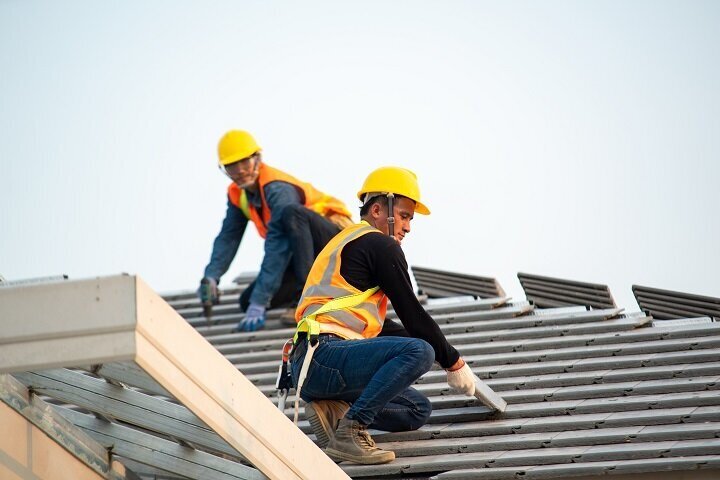Find a certified Sylvania Roofing Contractor to ensure long-lasting roofing services.
Exactly How to Assess Different Roof Alternatives for Your Structure Needs
Examining roof options for your structure needs an extensive technique that takes into consideration various elements such as the meant use the framework, regional environment conditions, and product characteristics. It is crucial to evaluate the benefits and downsides of various roof types, from asphalt roof shingles to steel and clay tiles, while also factoring in first expenses and long-lasting maintenance. Additionally, understanding energy effectiveness and visual appeal can influence your choice. As you contemplate these considerations, one inquiry continues to be: which factors will ultimately guide your selection for a sustainable and visually pleasing roofing service?
Analyzing Your Structure's Requirements
To efficiently evaluate roof alternatives, start by completely evaluating your structure's requirements. Start by considering the building's planned use, as different structures may demand differing roof covering requirements. Property roofings frequently prioritize visual appeals and insulation, while industrial structures may concentrate on toughness and load-bearing capability.
Following, review the local climate problems that will impact roof covering performance. Aspects such as temperature level variations, precipitation levels, and wind patterns can affect material selection and layout. A roof system that excels in a warm environment might not perform also in locations vulnerable to hefty snowfall or severe warmth.
In addition, examine the architectural stability of your building. Make sure that the existing framework can support the chosen roofing products, especially if considering larger choices. It is also vital to review any type of local building ordinance or regulations that may dictate details needs for roof covering systems.

Contrasting Roofing Products
When an extensive assessment of your structure's demands has been finished, the next step includes comparing different roof materials. Each product provides unique benefits and negative aspects, making it important to straighten your selection with your specific needs and situations.
Asphalt tiles are extensively recognized for their cost and convenience of setup, making them a preferred choice for residential buildings. On the other hand, steel roof, known for its resilience and long life, can hold up against rough weather problems however may come with a greater first financial investment.
Clay and concrete ceramic tiles supply superb thermal insulation and visual appeal, particularly for Mediterranean-style style, yet they require an even more robust architectural assistance due to their weight. Timber drinks offer a natural look and great insulation residential or commercial properties but may require extra maintenance and are susceptible to fire hazards.
Assessing Cost and Budget Plan
Evaluating your roof choices necessitates a cautious evaluation of price and budget plan considerations. The overall spending plan for a roof covering project comprises numerous elements, including product expenses, labor costs, upkeep, and possible long-lasting savings. It is important to develop a clear budget plan prior to checking out particular roof covering materials, as this will lead the decision-making procedure and assist you avoid overspending.
Begin by getting quotes from numerous specialists to comprehend labor expenses in your region. Make certain that these quotes include all essential solutions, such as elimination of the old roofing, setup, and any type of extra attributes, like insulation or ventilation enhancements - Roofing Contractor. Next, analyze the expense of numerous roofing materials, thinking about both preliminary setup costs and expected life expectancy

Recognizing Energy Effectiveness
Energy effectiveness plays a critical role in the selection of roof covering materials and systems, considerably impacting both energy consumption and overall convenience within a building. An click over here appropriate roof covering can boost thermal efficiency, decreasing the need for heating and cooling systems, which in turn decreases power bills and minimizes ecological effect.
When evaluating roof choices, consider materials that mirror rather than absorb warmth. Light-colored or reflective roof items can considerably reduce roof surface temperatures, resulting in lower energy usage throughout hot months. Furthermore, proper insulation and ventilation are necessary to optimize the energy efficiency of the whole roof. Insulation avoids heat transfer, while ventilation mitigates warm buildup in the attic room room.
An additional vital aspect is the roof system's long life and maintenance requirements. Durable products that require less constant substitute contribute to long-lasting power cost savings. The power efficiency of a roof system can additionally be evaluated with its compliance with established sustainability scores such as Power CELEBRITY or LEED.
Considering Visual Appeal
A roofing system's visual appeal dramatically influences the general appearance of a building, enhancing its building style and enhancing aesthetic appeal. Roofer. When examining roof covering alternatives, it is vital to consider how the picked product, shade, and design will harmonize with the existing structure and community. A properly designed roof covering can boost also the simplest of structures, transforming them into aesthetic centerpieces
Different roof covering materials provide various visual high qualities. Traditional shingles may evoke a classic appeal, while metal roofing can present a modern-day, streamlined appearance. Additionally, the color of the roof material plays an important role; lighter shades can make a building appear more spacious, while darker tones may create a cozier atmosphere.
Moreover, architectural components, such as dormers and eaves, can improve the roof's visual impact. It is a good idea to talk to expert developers or architects to ensure the selected roof covering option straightens with the total design intent. Eventually, a roof covering must not only give practical advantages however additionally add favorably to the structure's aesthetic, showing the proprietor's preference and the character of the surrounding environment.
Final thought
